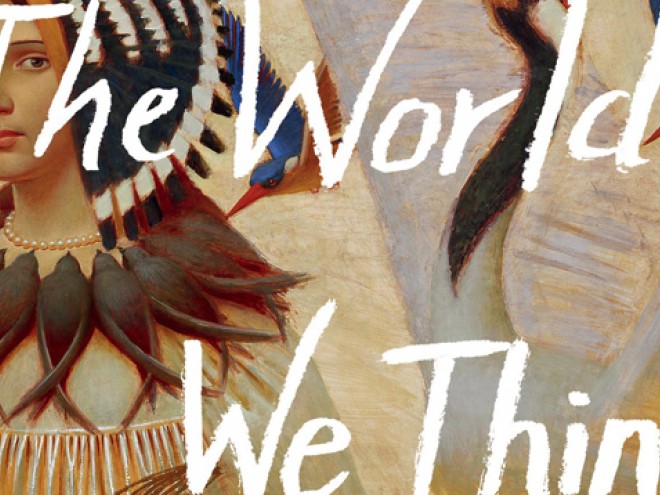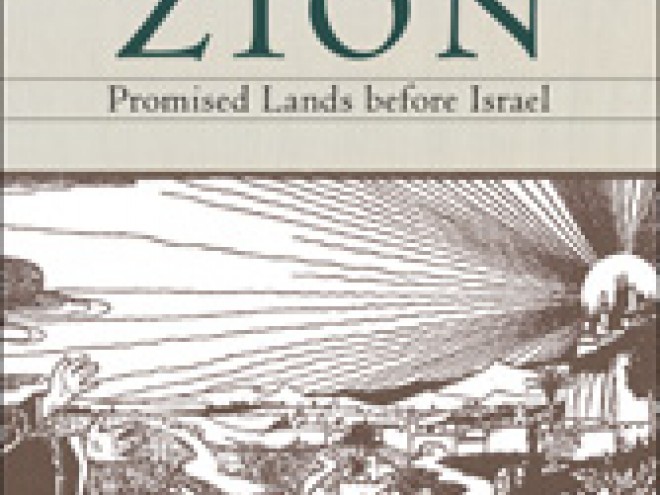Earlier this week, Adam Rovner wrote about what he thinks would have been the most viable Zion outside of Israel and top five alternative Jewish homelands that he didn’t explore in his new book, In the Shadow of Zion: Promised Lands before Israel, out this week from NYU Press. He has been blogging here all week for Jewish Book Council’s Visiting Scribe series.
 In the Shadow of Zion: Promised Lands before Israel presents a narrative history of modern proposals to create autonomous Jewish territories beyond the borders of Israel. I’ve referred to my book as a “shadow history” of Zionism — an effort to bring to light the forgotten struggles of a failed branch of Jewish nationalism called territorialism. Territorialism’s adherents believed in the necessity of establishing a Jewish home somewhere in the world other than the land of Israel. While researching and writing my book, I came across a number of works of fiction that imaginatively engaged with territorialist what-if scenarios. Here’s a list of five alternate histories of Zion in English and Hebrew:
In the Shadow of Zion: Promised Lands before Israel presents a narrative history of modern proposals to create autonomous Jewish territories beyond the borders of Israel. I’ve referred to my book as a “shadow history” of Zionism — an effort to bring to light the forgotten struggles of a failed branch of Jewish nationalism called territorialism. Territorialism’s adherents believed in the necessity of establishing a Jewish home somewhere in the world other than the land of Israel. While researching and writing my book, I came across a number of works of fiction that imaginatively engaged with territorialist what-if scenarios. Here’s a list of five alternate histories of Zion in English and Hebrew:
Number 5—Herzl Amar (2011)
Israeli author Yoav Avni’s novel considers what might have happened had a Jewish state been established in East Africa. The plot follows two friends who plan a trip to Palestine after their compulsory military service in a counterfactual African Israel. This clever and often satiric vision of contemporary Israel owes a debt to the historical proposal advanced by Theodor Herzl in 1903 to create a “New Judea” in what is today western Kenya. A chapter of my book is devoted to the so-called Uganda Plan and the crises it engendered, including a rupture at the heart of the Zionist Organization and an assassination attempt against Herzl’s lieutenant. An excerpt appeared in English last year in JewishFiction.net.
Number 4—IsraIsland (2005)
Nava Semel’s genre-bending Hebrew novel imagines in one of its three sections what might have happened had Mordecai Manuel Noah’s planned Jewish micronation of Ararat developed into a city-state in the Niagara River. Ararat, in Semel’s vision, becomes a force in American politics and succeeds so wildly that Jews can barely recall their biblical homeland. In my book, I describe Noah’s urgent call to European Jewry to resettle in America following the notorious Hep-Hep Riots of 1819. No one came, and Noah himself was ridiculed by religious leaders in France and England, and by the press in the United States.
Number 3 — “Noah’s Ark” (1899)
British author and early Zionist leader Israel Zangwill published “Noah’s Ark” during a period of close collaboration with Herzl. The story imagines that Noah’s call for immigration is answered by a German Jew, Peloni, a name derived from the Hebrew word for an anonymous “someone.” Fired by inspiration, Peloni sails for the New World intending to make Noah’s Ararat his home. He soon settles upon the site of the planned Jewish sanctuary near Buffalo, New York, but he remains the sole occupant of Noah’s utopian project and is condemned to loneliness and despair.
Number 2 — “The Last Jew” (1946)
This compelling and bizarre short story was penned by Jacob Weinshall, a doctor, author, and supporter of Ze’ev Jabotinsky’s right-wing Revisionist party. In the story, the Nazis have emerged victorious from World War II and exterminated every last Jew, except for a single survivor living in Madagascar. He is eventually discovered and condemned to death by a technocratic Nazi regime. Some Hebrew readers consider “The Last Jew” to be the first literary work to imagine a Nazi victory, now a staple plot in the alternate history genre. My book examines Jewish efforts to create a refugee colony in Madagascar, and how that plan was ultimately perverted by the Nazis. Though doubts remain, my research leads me to believe that Jabotinsky himself supported limited Jewish relocation to Madagascar, a fact which may help explain Weinshall’s hallucinatory tale.
Number 1—The Yiddish Policemen’s Union (2007)
Michael Chabon’s clever novel may be the most familiar example of a territorialist what-if. Chabon makes use of the detective genre to explore the fictional world of a Yiddish-speaking Jewish territory in Sitka, Alaska. The premise derives from a real proposal to channel Jewish immigrants to Alaska that was supported by Roosevelt’s Secretary of the Interior, Harold Ickes, in 1938. Chabon, however, revealed to me that his fantasy also has its origins in his long-standing fascination with Mordecai Manuel Noah’s plan for Ararat.
To learn more visit www.adamrovner.com.
Related Content:
- The Yiddish Policeman’s Union by Michael Chabon
- From the Ghetto to the Melting Pot: Israel Zangwill’s Jewish Plays edited by Edna Nahshon
- Essays: Reading Lists, Literary Connections and Influences



